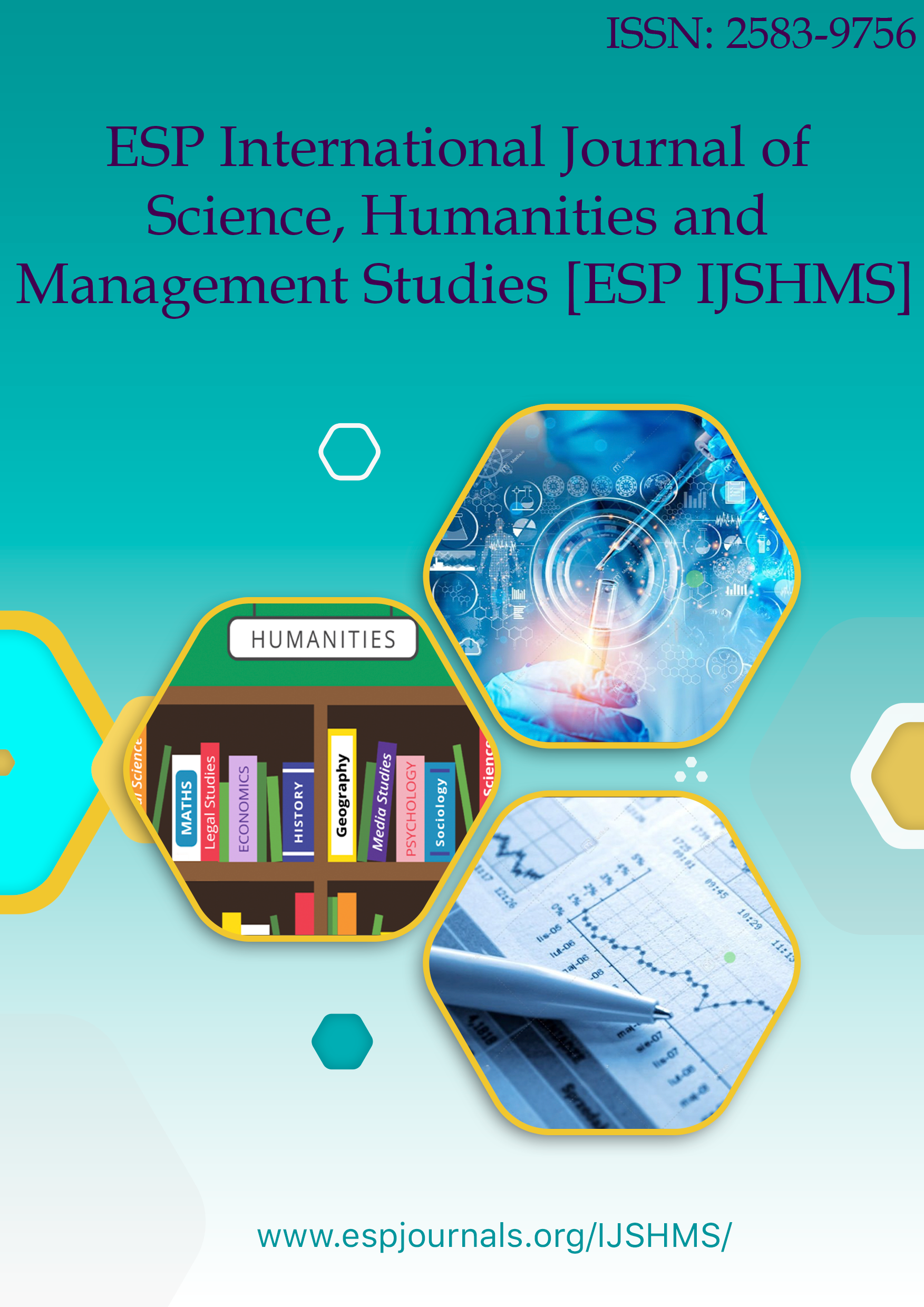ESP International Journal of Science, Humanities & Management Studies(ESP-IJSHMS)
Citation :
Luc Hung Quoc, Pham Thi Quyen, 2024. "Applied Research on Several Exercises to Develop Endurance for Male Students in Swimming at Tan Trao University" ESP International Journal of Science, Humanities & Management Studies(ESP-IJSHMS) Volume 2, Issue 4: 8-16.
Abstract :
The quality of physical education (PE) instruction plays a critical role in shaping students' overall well-being and academic performance. This study explores innovative strategies to enhance the quality of PE instruction at Tan Trao University. By integrating contemporary pedagogical methods, utilizing advanced technological tools, and fostering a supportive learning environment, this research aims to identify effective approaches that can be implemented to elevate PE standards. Emphasis is placed on the holistic development of students, encompassing physical, mental, and social aspects. The findings highlight the importance of continuous professional development for instructors, student-centered teaching practices, and the incorporation of feedback mechanisms to adapt and refine instructional techniques. Ultimately, this research provides a comprehensive framework for improving PE instruction, which can serve as a model for other educational institutions striving to enhance their physical education programs.
References :
[1] Astorino, T. A., & Roberson, D. W. (2010). Efficacy of interval training to improve aerobic fitness. Sports Medicine, 40(9), 775-790.
[2] Costill, D. L., & Wilmore, J. H. (2015). Physiology of Sport and Exercise (6th ed.). Human Kinetics.
[3] Dekerle, J., Brickley, G., Alberty, M., & Pelayo, P. (2010). Swimming performance and maximal lactate steady state concentration. International Journal of Sports Medicine, 31(07), 487-493.
[4] Girold, S., Maurin, D., Dugué, B., Chatard, J. C., & Millet, G. (2007). Effects of dry-land vs. resisted-and assisted-sprint exercises on swimming sprint performances. The Journal of Strength & Conditioning Research, 21(2), 599-605.
[5] Haljand, R. (2008). Technique analysis of swimming. Biomechanics and Medicine in Swimming, 101-106.
[6] Houmard, J. A. (1991). Impact of training volume on endurance performance in endurance athletes. Sports Medicine, 12(5), 290-295.
[7] Kendall, K. L., Smith, A. E., Graef, J. L., Fukuda, D. H., Moon, J. R., Beck, T. W., ... & Stout, J. R. (2009). Effects of four weeks of high-intensity interval training and creatine supplementation on critical power and anaerobic working capacity in college-aged men. The Journal of Strength & Conditioning Research, 23(6), 1663-1669.
[8] Laursen, P. B., & Jenkins, D. G. (2002). The scientific basis for high-intensity interval training. Sports Medicine, 32(1), 53-73.
[9] Maglischo, E. W. (2003). Swimming fastest. Human Kinetics.
[10] Mujika, I., & Padilla, S. (2001). Physiological and performance characteristics of male professional road cyclists. Sports Medicine, 31(7), 479-487.
[11] Nugent, F. J., Comyns, T. M., & Burrows, E. (2019). Effects of low-volume high-intensity interval training on performance in competitive swimmers: A systematic review. The Journal of Strength & Conditioning Research, 33(8), 2285-2296.
[12] Pyne, D. B., Boston, T., Martin, D. T., & Logan, A. (2000). Evaluation of the Lactate Pro blood lactate analyser. European Journal of Applied Physiology, 82(1-2), 112-116.
[13] Pyne, D. B., Lee, H., & Swanwick, K. M. (2001). Monitoring the lactate threshold in world-ranked swimmers. Medicine and Science in Sports and Exercise, 33(2), 291-297.
[14] Rinehart, K. L. (2007). High-intensity cycling intervals. ACSM's Health & Fitness Journal, 11(4), 7-13.
[15] Sato, M., Kawashima, J., Yoshimura, M., Aikawa, Y., Miyaji, N., Tadano, C., ... & Takayanagi, K. (2010). Regulation of anaerobic and aerobic energy metabolism in high-intensity intermittent exercise in humans. European Journal of Applied Physiology, 109(3), 573-580.
[16] Sperlich, B., Zinner, C., Heilemann, I., Kjendlie, P. L., Holmberg, H. C., & Mester, J. (2010). High-intensity interval training improves VO2peak, maximal lactate accumulation, time trial and competition performance in 9–11-year-old swimmers. European Journal of Applied Physiology, 110(5), 1029-1036.
[17] Tanaka, H., & Swensen, T. (1998). Impact of resistance training on endurance performance. Sports Medicine, 25(3), 191-200.
[18] Toubekis, A. G., Douda, H. T., & Tokmakidis, S. P. (2005). Influence of different rest intervals during active recovery on repeated sprint swimming performance. European Journal of Applied Physiology, 93(5-6), 694-700.
[19] Weston, A. R., Myburgh, K. H., Lindsay, F. H., Dennis, S. C., Noakes, T. D., & Hawley, J. A. (1997). Skeletal muscle buffering capacity and endurance performance after high-intensity interval training by well-trained cyclists. European Journal of Applied Physiology and Occupational Physiology, 75(1), 7-13.
[20] Wilmore, J. H., & Costill, D. L. (2004). Physiology of Sport and Exercise. Human Kinetics.
Keywords :
Physical Education, Swimming Endurance, Male Students, Training Interventions , Intrinsic Motivation.


 : 10.56472/25849756/IJSHMS-V2I4P102
: 10.56472/25849756/IJSHMS-V2I4P102